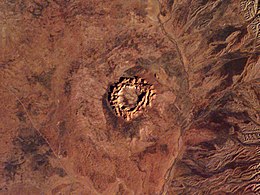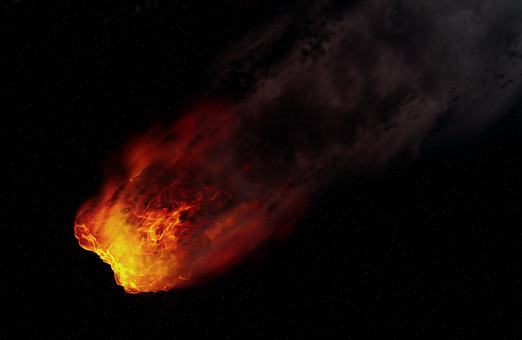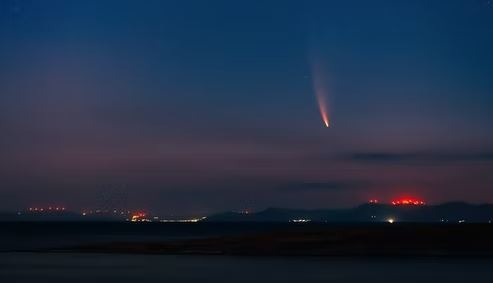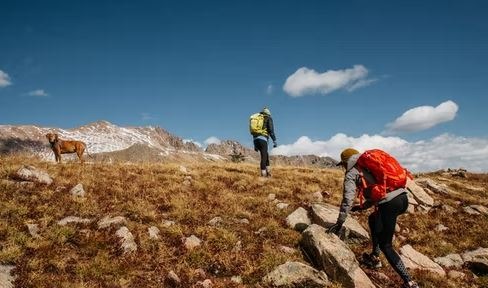Gosses Bluff, also known as Gosse’s Bluff is thought to be the eroded remnant of an impact crater. The Western Arrernte people of the impact crater’s surrounding regions call it Tnorala. Gosses Bluff is located in the southern Northern Territory near central Australia. It is approximately 109 miles (175 km) west of Alice Springs and around 132 miles (212 km) northeast of Uluru (Ayers Rock). In 1872, Gosses Bluff was named by Ernest Giles in honor of William Gosse’s brother Henry who was a part of an expedition led by William Gosse.
Wolfe Creek Crater is not the only impact crater in Australia. Gosses Bluff is one of the confirmed Australian impact craters. It has a scientific and cultural significance. According to NASA Earth Observatory, Gosses Bluff is sandwiched between the James Range and Macdonnell Ranger in the heart of Australia. Gosses Bluff was formed 142 million years ago when a meteorite made an impact on the earth’s surface which is now Australia.
Formation of Gosses Bluff
The Gosses Bluff impact crater is thought to have been formed by an impact of a comet or asteroid that hit the earth’s surface 142.5 ± 0.8 million years ago. The meteorite made an impact on the earth’s surface in the early Cretaceous period which is very close to the Jurassic Cretaceous boundary. The original estimated diameter of the impact crater was 14 miles (22 km) but it has been the victim of erosion.
After erosion, the diameter of the Gosses Bluff impact crater is 3.1 miles (5 km) with a 180 m (590 feet) height. It is considered the eroded relic of the central uplift of the impact crater. The topographic feature of the impact crater was first proposed in the 1960s. The strongest evidence came from the abundance of shattered cones.
Furthermore, it has been the subject of oil exploration in the past. As a result, two abandoned exploration wells have been found near the center of the impact crater.
Cultural Significance of Gosses Bluff Impact Crater
Aborigines of the Western Arrernte language group have a cultural significance and Gosses Bluff is a sacred place to them. By Aboriginal people, Gosses Bluff is called Tnorala which is now in the Tnorala Conservation Reserve. A story by a Western Arrernte attributes it to the origin of the impact crater.
The story says that in the Dreamtime, a group of celestial women was dancing like stars in the Milky Way. One of the women got tired and put her baby in a wooden basket. This wooden basket is known as Turna or Coolamon. As the women continued to dance, the basket fell and sank to the surface. Hence, the baby fell to the earth’s surface and pushed the rocks up.
To this day, the parents of the baby, the Morning and Evening Star continue to search for their baby. Due to the constellation Corona Australis, the bend can be seen in the sky. Those who wish to visit this impact crater should respect the cultural importance of the Western Arrernte Aboriginal People. Also, one should obey the signs indicating where access is not allowed.
Findings Of Gosses Bluff Impact Crater
Studies of the crater have allowed scientists to establish a probable formation history of the impact crater, regardless of the fireball. A comet or asteroid hit a flat surface of Earth that was higher than the current surface. The explosion because of the meteorite impact can be described as a cataclysm, vaporizing the meteor, and sending up a mushroom-shaped cloud. It is estimated that the energy created from an impact would have been approximately 200,000 times greater than Hiroshima atomic bomb.
According to the estimations by scientists, the meteorite was traveling at the speed of 25 miles per second (40 km/second). When it hit the earth’s surface, it would have gone 600 meters below the surface before vaporizing. However, the impact was so severe that rock strata were broken 4 km deep. As a result, the meteorite caused severe compression followed by a rebound which caused the Gosses Bluff.
Erosion of Gosses Bluff Impact Crater
The rim of the crater eroded over time and the crater filled with sediments that eventually rose to the level of the surroundings. A stream passed through the crater and sediments eroded into hard impact rock which is present now. It appears to rise because the level of the plain surrounding the impact crater was lowered due to erosion.
The rim, 180 meters above the surrounding, is bounded by cliffs. The crater floor is slightly above the level of the surrounding place on the northern edge of Amadeus Basin. Amadeus Basin is a syncline with a flat floor composed of Paleozoic and Proterozoic Strata which is approximately 8 km thick.
At the crest of the rim, there is an ancient erosional surface believed to be Upper Cretaceous or Tertiary age. It is approximately 900 meters above sea level.
Visiting Gosses Bluff Impact Crater
In 1872, the remaining crater was named Gosses Range by Ernest Giles, an explorer after H. Gosse who was a fellow of the Royal Society. However, the title to the reserve was granted to the traditional owners which is now managed in conjunction with the Parks and Wildlife Commission.
Access
The reserve is located 175 km west of Alice springs which can be accessed via Namatjira Drive or Larapinta Drive. For the last 5 km to the Reserve, you need a 4×4 vehicle. Furthermore, a Mereenie Tour Pass is required if the visitors want to continue along Red Center Way to Watarrka National Park. During heavy rains, all the roads become impassable.
When To Visit
The Reserve is accessible all year round but it becomes impossible to pass through the roads during the heavy rains. It is recommended that Gosses Bluff should be visited during the cooler months such as April to September when the weather is most pleasant.
What To Do
A visit to Gosses Bluff offers a view inside the crater. There is a short hike to the lookout on an adjacent ridge. Also, a longer loop hike offers a superior view of the crater and a higher vantage point. Following the wishes of the traditional owners, access to Tnorala and walking on the rim of the crater are not permitted.
Inside the Gosses Bluff impact crater, there is a picnic area. It includes restrooms, tables, and a shaded shelter with information about the area. However, there are no fire pits or barbecue facilities at the picnic area.
Safety And Comfort
While visiting the Gosses Bluff impact crater, you must:
- Obey the safety signs in the park.
- Carry water with you and drink at intervals.
- Wear a hat with shade and use insect repellent and sunscreen.
- Wear suitable shoes and clothes.
- Avoid strenuous activities during the heat day.
- Consider your fitness and health, before choosing a walk or hike.
- Stay on designated trails and tracks.
Apart from safety checks, there are a few things to keep in mind as follows:
- Respect the cultural and historical significance of Gosses Bluff Impact Crater.
- Fires are prohibited in the reservation.
- Please carry a bag for trash because there are no bins.
- Pets are not allowed.
- Drones are not allowed.
- Generators are not allowed.
Gosses Bluff – A 142 Million Years Old Impact Crater
Gosses Bluff is also known as Tnorala which is located in the Northern Territory of Australia. It is one of the heavily studied impact craters in Australia. Unlike other top 10 craters on Earth, Gosses Bluff is sandwiched between James Range and Macdonnell Range. This impact crater has a cultural significance to the Aboriginal people. So, before visiting Gosses Bluff, one should respect the cultural importance.
Gosses Bluff is one of the best-preserved impact craters like Barringer Crater. It is preserved by the Parks and Wildlife Commission of the northern territory. While visiting Gosses Bluff, make sure to read the dos and don’ts. The reserve is accessible all year but it is recommended to visit Gosses Bluff in cooler months such as April to September.









